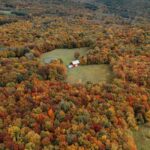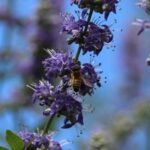The Flame Tree, otherwise known as Royal Poinciana, is a stunningly beautiful tree that can provide a bold addition to any landscape. The tree’s large, showy blooms of red-orange and gorgeous foliage make it an eye-catching asset to any garden. For anyone looking for tips on how to grow and care for this amazing plant, look no further. In this article, we will explore the necessary steps and requirements for successful cultivation of the Flame Tree.
As specialists in botany and gardening, we understand that growing a healthy Royal Poinciana requires knowledge of the plant’s needs and proper maintenance. A well-established Flame Tree will reward its owner with years of beauty and enjoyment. With the right care, your Flame Tree can reach heights of 30 feet or more over time!
Growing a Flame Tree is not only rewarding aesthetically – it’s also an act of service to others. When planted in public spaces such as parks or along streets, the Royal Poinciana can help beautify our environment while providing much-needed shade and food sources for wildlife. Caring for this plant is an opportunity to give back to nature while also enriching your home with its gorgeous blossoms!
What Is A Flame Tree (Royal Poinciana)?
The flame tree or royal poinciana (Delonix regia) is a striking, almost majestic sight to behold. Its vibrant blooms of red and orange are showstoppers in any garden and bring a sense of wonderment. It’s an evergreen tree that can reach heights of up to 30 feet with a spread of 20 to 35 feet, so it needs plenty of room to grow. Plus, its leaves are delicate and droop gracefully from the branches. That gives it an added touch of elegance.
The flame tree is not difficult to care for but does require some knowledge about its preferences. It likes full sun and well-drained soil with a pH between 6.5 and 7.5; if the pH is off, you may need to adjust it accordingly by adding lime or sulfur. It prefers warm climates but can tolerate temperatures down to 20 degrees Fahrenheit as long as they don’t last too long. Also, while it doesn’t need a lot of water, you should water it during periods of drought or extreme heat; otherwise, let nature take its course.
Finally, fertilizing your flame tree once a year with a slow-release fertilizer will provide it with nutrients necessary for healthy growth and flowering throughout the season. With regular maintenance and care, your flame tree will stand tall in all its glory for years to come!
Where To Plant A Flame Tree
The flame tree, or royal poinciana, is like a living flame that blazes in the heat of the summer sun. Its fiery, vibrant red and orange leaves make it an eye-catching addition to any garden. But where should you plant this showstopper?
Choosing a location for your flame tree is key to its success. It needs full sun exposure with plenty of room to spread out. If it’s too shaded, its growth will be limited and its blooms won’t be as impressive. Be sure to pick an area with well-drained soil that’s free from standing water; this tree doesn’t do well in areas prone to flooding. Keep in mind that the branches can grow wide over time, so make sure there’s adequate space between your flame tree and other plants or structures.
When it comes to climate, the flame tree is quite hardy and can tolerate temperatures down to about 30°F (though some varieties may need protection if temperatures drop lower). In hot climates, provide afternoon shade as needed to protect the foliage from scorching sun rays. With careful consideration of all these factors, you’ll have found a suitable spot for your new flame tree!
Preparing The Soil For A Flame Tree
When planting a flame tree, it is important to prepare the soil properly. Proper soil preparation ensures that your flame tree will have the best chance of thriving. For best results, choose a well-drained soil and incorporate organic matter such as compost or aged manure into the planting bed. This will help promote healthy root growth and provide nutrients for your flame tree.
The pH level of the soil should also be checked before planting to ensure that it is within the optimal range. Flame trees prefer soil with a slightly acidic pH, between 5.5 and 6.5 on the scale. If you find that the pH level is too high or low, you can adjust it by adding sulfur or lime to achieve the desired level.
Finally, when planting your flame tree, create a mound of soil around its roots to ensure that they are well-drained and provide plenty of room for growth. Taking these steps will give your flame tree a strong start and help ensure its long-term health and growth. Now that you have prepared the soil for your flame tree, it’s time to get planting!
Planting A Flame Tree
Planting a flame tree is the most thrilling step of all! It’s like watching your dreams come true as you bury your bare root or potted flame tree into its new home, where it will flourish for years and years. To ensure success, here are 4 essential tips for planting a flame tree:
Firstly, choose a location that gets plenty of sunlight and has well-drained soil. A south or southwest facing area is ideal. Make sure to dig a hole twice as wide as the root ball of the flame tree, but no deeper than the same depth as the root ball.
Secondly, position the flame tree in the center of the hole so that it stands straight up. Then begin filling in around it with soil from the hole, pressing down gently to remove any air pockets. This will help keep your flame tree firmly rooted in place.
Thirdly, cover the newly planted area with a layer of mulch. This will help keep moisture in and weeds out while also insulating against extreme temperatures. Lastly, be sure to water your newly planted flame tree thoroughly until soil is evenly moist throughout. This will allow them to become fully established and get off to a healthy start!
By following these simple steps, you can be sure your new flame tree has been properly set up for success!
Watering A Flame Tree
It is often assumed that the care required for a flame tree is minimal, but it is actually quite demanding. As such, watering a flame tree properly can make all the difference between a healthy, thriving plant and one that fails to produce its stunning blossoms. Knowing how much water to give your flame tree and when to do so will ensure the best possible growth and blooming performance.
When it comes to watering a flame tree, keep in mind that they are drought-tolerant once established. However, during the first two years of its life cycle, your flame tree should be given ample water at least twice weekly in dry periods. This not only ensures that the roots and soil remain adequately moist but also helps promote strong root and stem development. When watering your flame tree, it is important to thoroughly saturate the ground around its base until water is seen seeping out of the drainage holes in its pot or container.
The frequency of watering can vary depending on weather conditions and seasonality but should be reduced slightly as winter approaches. During this time, you should only provide water when there’s an extended dry spell since excessive moisture can lead to root rot or fungal diseases. Additionally, mulching around the base of your flame tree will help keep moisture levels consistent throughout the year without over-watering it.
By following these guidelines for watering a flame tree properly, you can ensure optimal growth and impressive floral displays for many years to come.
Fertilizing A Flame Tree
Royal poinciana, or flame tree, is an impressive sight with its large canopies and bright orange-red flowers. It’s no surprise that these trees are popular for their beauty and grandeur; however, it’s important to remember that proper fertilizing is a key factor in keeping them healthy. In fact, studies have found that fertilizers can increase the rate of growth for flame trees by up to 30 percent!
Fertilizing a flame tree is relatively simple. Once the tree has been planted in well-draining soil and established itself in the environment, it should be fertilized at least once a year with a balanced fertilizer like blood meal or bone meal. The amount of fertilizer used should be determined by the size of the tree; larger trees will require more fertilizer than smaller ones. Additionally, it’s important to avoid overfertilizing as this can lead to nutrient burn and other problems.
To ensure your flame tree gets enough nutrients, it’s also advisable to add some organic matter such as compost or manure around its base during periods of drought or dry weather. Doing this helps retain moisture and provides essential nutrients that help keep your tree healthy. With proper fertilization and care, you can ensure your royal poinciana remains an impressive sight for years to come!
Pruning A Flame Tree
Pruning a flame tree is an important part of its care. When pruning, it’s important to recognize the shape of the tree and what its purpose is. If you’re looking for a tree that can provide shade, or if you have limited space, then make sure to prune accordingly. You don’t want to take away from the beauty of the flame tree by over-pruning.
When pruning, it’s always best to start with dead or damaged branches first. Then look for any crossing branches and remove them as needed. Prune back any branches that are growing inwards rather than outwards and make sure not to cut too much at one time. You also want to maintain a good balance between light and dark foliage so that the tree looks aesthetically pleasing when viewed from all angles.
Finally, you should also be aware of your local pruning ordinances before you begin cutting down any branches on your flame tree. Some cities may have laws against removing large limbs from trees in public areas or near power lines, so it’s best to check with your local municipality before you start cutting away.
TIP: To ensure that your flame tree remains healthy and attractive for years to come, remember to fertilize it regularly according to instructions on the fertilizer package label and water it deeply but infrequently during periods of drought or heat stress.
Controlling Pests & Disease
Though the flame tree (royal poinciana) is generally a hardy, healthy plant, it is still subject to pests and disease. In fact, according to research, more than 400 species of insects have been found on the flame tree! To keep these pests from damaging your flame tree, there are several things you can do.
First and foremost, make sure your flame tree is getting enough water and fertilizer. Overwatering or underfeeding can cause stress that makes the plant more susceptible to insect infestations. Additionally, pay attention to signs of damage or problems; if you notice issues with any of the leaves or branches, inspect it closely for signs of an infestation.
If you do find an infestation, take action quickly. Remove any affected leaves or branches as soon as possible and spray with an appropriate insecticide. You may also want to consider introducing beneficial insects like ladybugs into your garden; they will help keep unwanted pests away from your flame tree.
But controlling pests isn’t the only thing you need to worry about when caring for a flame tree – you’ll also need to protect it from cold weather.
Protecting A Flame Tree From Cold Weather
Protecting a flame tree from cold weather is an important part of its care. Just as it’s essential to take measures to control pests and diseases, so too must one be mindful of the temperatures in order to protect a flame tree. By taking the right steps, gardeners can ensure that their flame trees thrive, even in colder climates.
Firstly, it is important to provide winter protection for a flame tree if the temperature drops below 40°F (4°C). A thick layer of straw or hay mulch should be spread over the root area of the tree to insulate it from the cold. When possible, this mulch should be kept away from the trunk of the tree by at least six inches. Additionally, wrapping burlap around the trunk and tying it with twine will further help protect against colder temperatures.
Lastly, during periods when there is heavy snowfall or ice storms, extra precautions may need to be taken in order to protect a flame tree. Gardeners should place stakes or posts around the perimeter of their trees and drape burlap over them so that they are better insulated from extreme cold weather conditions. If necessary, they may also need to use blankets or tarps laid over frames made from bamboo poles in order to completely enclose their trees until spring arrives.
These simple steps will go a long way towards ensuring that a flame tree survives and thrives despite cold temperatures. With proper winter protection in place, gardeners can enjoy these stunning trees for many years to come.
Special Considerations For Growing A Flame Tree
When it comes to growing a flame tree, there are some special considerations to take into account. Firstly, it’s important to ensure the tree is planted in an area that gets plenty of sun and has well-draining soil. Flame trees also need regular pruning and trimming in order to encourage healthy growth and maintain their shape. Additionally, these trees are more prone to diseases like anthracnose and canker, so regular inspections for signs of disease and pest infestations should be done.
Furthermore, flame trees can become susceptible to cold temperatures if not adequately prepared for winter weather. To protect your tree from cold temperatures, you should wrap the trunk with burlap or apply an anti-desiccant spray before winter begins. This will help shield the tree from frost damage and allow it to survive through the winter months without issue.
Finally, when planting a flame tree in your garden or landscape, always keep in mind its size and potential growth over time. These trees can reach up to 40 feet tall when mature, so make sure you have enough space for them to grow without causing a problem. With proper care and maintenance, this beautiful tree will thrive for many years!
Benefits Of A Flame Tree
Like a phoenix rising from the ashes, planting and caring for a flame tree (royal poinciana) can be incredibly rewarding. It may seem daunting at first, but with the right knowledge and tools, you’ll be able to reap the benefits of this magnificent tree. Here are some key points to consider when looking into growing a flame tree:
• Site: Flame trees prefer well-drained soil in full sun but can tolerate partial shade. They grow best in warm climates and need protection from strong winds. • Water: Flame trees require regular watering during the summer months and should be checked for signs of drought stress or overwatering. • Fertilizer: Apply a balanced fertilizer twice a year for optimal growth and health. • Pruning: Prune your flame tree as needed to maintain its shape and size. • Pests & Diseases: Be aware of potential pests or diseases that could affect your flame tree and take steps to prevent them if possible.
The benefits of having a flame tree in your garden are numerous! Not only will it create an eye-catching display with its bright red flowers, but it also provides shade, attracts pollinators like bees, birds, and butterflies, improves air quality by reducing carbon dioxide levels, and even provides food for wildlife. Moreover, it’s relatively low maintenance compared to other trees which makes it ideal for busy lifestyles. With all these advantages, there is no doubt that having a flame tree will make any outdoor space more beautiful!
Uses For A Flame Tree
The flame tree, or royal poinciana, is a sight to behold: yet its beauty goes far beyond aesthetics. It’s often seen as an ornamental tree, but its many uses make it much more than that. Surprisingly, the flame tree provides far more than just a burst of colour during summertime. Let’s explore the wonderful uses of this unique species!
Firstly, the flame tree is a great choice for providing shade and creating privacy screens in gardens. Its broad canopy makes it ideal for shading patios and outdoor entertaining areas. Secondly, it can be used as a windbreak to protect other plants from strong winds. Finally, it provides excellent habitat for birds and other wildlife due to its dense foliage and abundance of flowers and seeds.
In addition to these practical applications, the flame tree has also been used symbolically in literature throughout history. Its bright red blooms have been associated with love and passion while its roots are said to symbolise stability and security. It has even been suggested that the flame tree was thought to represent immortality by ancient civilizations!
Whatever your reasons for wanting a flame tree in your garden, there’s no denying it will make an impressive statement – one that will be enjoyed by you and your guests for years to come!
Harvesting A Flame Tree
Harvesting a flame tree is an important step in its cultivation. For example, the owner of a local nursery in Florida found success harvesting young poinciana seeds to increase the number of trees on their property. Poincianas are typically ready to harvest when they produce a large crop of seed pods annually. Harvesting should be done carefully and at the right time of year, as this can affect how well the seeds will sprout and grow during the following season.
When it comes to gathering poinciana seeds, timing is essential. Ideally, this should take place when the pods have just started to split open and release their seed inside, which usually happens around late spring or early summer in warmer climates. The outer shell of each pod should be removed gently with your hands before collecting the inner contents for planting or storing later on. It’s also important to note that unripe pods won’t typically yield viable seeds, so it’s best to wait until they have ripened before harvesting them.
Once harvested, poinciana seeds should be stored in a cool, dry place until you are ready to plant them. It’s best not to store them for too long as they may lose viability over time, especially if exposed to extreme temperatures or humidity levels. Before planting them outdoors, it’s recommended that you soak the seeds overnight in warm water first; this will help ensure better germination rates when they are planted out into garden beds or pots later on. With proper care and attention during harvesting and storage stages, flame tree owners can look forward to a successful crop of beautiful blooms come next season!
Storing & Preserving A Flame Tree
It may come as a surprise, but storing and preserving a flame tree doesn’t have to be difficult. In fact, with the right knowledge and techniques, it can be relatively straightforward. As specialists in botany and gardening, we can provide the ins and outs of how to take care of your royal poinciana.
When it comes to storage, you’ll want to keep your flame tree away from direct sunlight or intense heat. It’s also best to store the plant in a dry place that’s not too humid. You can even hang it upside down from the ceiling if you’re feeling creative! Additionally, if you intend on keeping it outside for an extended period of time, try covering it with burlap for protection against the elements.
As for preservation, again make sure that the environment is low humidity and cool temperatures; otherwise, your flame tree won’t survive long-term storage. If you want to keep some of its vibrant colors intact, you should spray it with water regularly; this will help maintain its bright hues while also keeping it hydrated. And if you want to display your flame tree indoors during winter months, make sure that there’s adequate airflow around the plant so that mold isn’t able to form on its leaves or branches.
With proper storage and preservation techniques in hand, any gardener can ensure their flame tree continues to thrive – no matter how long they plan on keeping it!
Popular Varieties Of Flame Tree
When it comes to flame trees, there are many popular varieties that can be grown in your garden. With the right care and attention, these trees will thrive and produce stunning blooms. In this section, we’ll look at some of the most popular flame tree varieties out there.
The Royal Poinciana is a large deciduous tree that can reach heights of up to 40 feet. It produces bright red-orange flowers from spring through summer, with green foliage throughout the year. This variety of flame tree grows best in full sun and well-drained soil. It’s also resistant to drought and heat, making it an ideal choice for those living in warmer climates.
Another popular variety of flame tree is the Flame Tree or Delonix regia. This variety has showy orange-red clusters of flowers during late spring and early summer. The leaves are light green and very feathery, providing plenty of shade under the canopy of this beautiful tree. These trees do best when planted in moist soils with plenty of direct sunlight. They’re also quite frost tolerant, making them a great choice for cooler climates too!
With so many varieties available, there’s no doubt that you can find one to suit your individual needs and climate conditions. Whether you’re looking for a stunning bloomer or a reliable shade tree for your garden, there’s sure to be a flame tree variety that fits the bill!
Frequently Asked Questions
How Long Does It Take For A Flame Tree To Reach Maturity?
The sight of a fully mature flame tree is nothing short of majestic. The bright, fiery hues of the leaves, combined with its unique shape and size can make it the highlight of any garden. But how long does it take for a flame tree to reach maturity?
A royal poinciana or flame tree takes approximately 4-5 years to reach maturity. However, this time frame may vary depending on environmental conditions and your care routine. If you’re planting one from seed, it will take even longer before you can enjoy its full beauty.
To encourage healthy growth for your flame tree, provide well-drained soil with lots of organic matter that’s slightly acidic. Ensure that the soil remains moist but not waterlogged as this leads to root rot. For best results, fertilize every 2-3 weeks in spring and summer with a balanced fertilizer blend specifically designed for flowering trees. Pruning should also be done regularly to maintain its shape and keep it free from dead or diseased branches. Lastly, don’t forget to protect your flame tree from pests and diseases by regularly inspecting its leaves and using appropriate treatments when necessary.
With proper care and attention, you’ll soon be able to enjoy the beauty of a fully grown flame tree in your garden!
Are There Any Specific Conditions That A Flame Tree Needs To Thrive?
One would think that a flame tree, with its exotic beauty and striking colors, needs only the sunniest of spots to thrive. But ironically, this may not be the case! In fact, the best conditions for these majestic trees to really flourish are a bit more nuanced than one might expect. Specialist in botany and gardening will tell you that, while they can tolerate full sun, flame trees do much better when given moderate shade.
Furthermore, soil type is also an important factor in providing optimal conditions for your flame tree – it should be moist and well-drained with plenty of organic matter. Adding compost or mulch around the base of the tree will help keep moisture levels consistent and promote healthy growth. Additionally, it’s important to remember that flame trees need regular watering during dry spells as they don’t have deep roots.
If you provide these specific conditions for your flame tree – including adequate shade, appropriate soil type and regular watering – then you are ensuring that it will have all of the nutrients necessary to reach its full potential. This is key if you want to truly enjoy its blossoms in all their glory!
How Often Should I Fertilize My Flame Tree?
When it comes to fertilizing a flame tree, it’s important to understand the importance of following a specific schedule. A flame tree needs nutrients to grow and thrive and regular fertilization is essential in providing these nutrients. So, how often should you fertilize your flame tree?
It’s recommended that you fertilize your flame tree twice a year, once in the spring and once in the late summer. Applying the fertilizer around the base of the tree is key as this helps ensure that all parts of the tree benefit from its nourishment. A slow-release fertilizer should be used so that it can be absorbed more easily by your flame tree. Always take care not to over-fertilize as this can lead to nutrient burn which could potentially harm your flame tree’s health.
Feeding your flame tree with a balanced fertilizer is also important for helping it grow and flowering profusely. It’s best to use a fertilizer specifically formulated for trees, such as Miracle-Gro Tree & Shrub Fertilizer Spikes or similar products like Osmocote Plus Outdoor & Indoor Smart-Release Plant Food or Jobe’s Organics Tree Fertilizer Spikes. Following this schedule will help your flame tree reach its full potential while also keeping it healthy and happy!
How Can I Protect My Flame Tree From Extreme Temperature Fluctuations?
Protecting your flame tree from extreme temperature fluctuations is paramount for its successful growth and health. To prevent any damage from the harshest of temperatures, it’s critical to establish a proper care plan that will ensure the royal poinciana is safe. As a specialist in botany and gardening, I’m here to provide you with helpful tips for ensuring your flame tree remains healthy.
First and foremost, it’s essential to select an appropriate location for your flame tree. Choose an area that receives ample sunlight but also offers some protection from strong winds. If possible, try to find a spot that has been shielded from frosty temperatures by nearby shrubs or trees. Moreover, make sure the soil is well-draining and not prone to flooding during heavy rainfalls.
As the warmer months approach, it’s wise to get into the habit of regularly monitoring your flame tree’s environment. Seek out any signs of distress such as wilting leaves or yellowing foliage and take appropriate measures if needed. Additionally, you should be prepared to cover up your flame tree on particularly cold nights if required. Be sure to use a breathable fabric like burlap so as not to suffocate the plant underneath.
Taking these precautionary steps can help safeguard your royal poinciana against extreme temperature fluctuations and other adverse weather conditions. It may seem like a lot of work at first – but with dedication and proper care, you can successfully protect your flame tree for years to come!
Can I Grow A Flame Tree In A Pot?
When it comes to growing a flame tree (royal poinciana) in a pot, there are certain considerations that need to be taken into account. If you’re looking for a dramatic accent piece for your patio or deck, then this is definitely an option. But can you successfully keep a flame tree in a pot?
The answer is yes – but you must do your research and get the right pot to give your flame tree the best chance of survival. The most important thing is ensuring the container has plenty of drainage holes and is large enough to accommodate the roots of the flame tree. Additionally, since these trees are fast-growing and often reach heights of up to 40 feet tall, opt for a slightly larger pot than you typically would for other plants.
To ensure success when growing a flame tree in a pot, make sure to provide adequate sunlight, water and fertilizer throughout the year. The soil should remain moist but not soggy; if you notice any yellowing leaves or stunted growth it could be an indication that the soil isn’t draining properly or that it’s too wet. You may also want to consider using stakes or cages around your potted flame tree as they tend to become top-heavy with age and can benefit from extra support from windy days.
In short, if you have limited space but still want to enjoy the stunning beauty of the royal poinciana in your garden, then growing one in a pot may be an ideal solution – just make sure you take all necessary steps for giving it proper care and attention!
Conclusion
Flame Trees are an incredibly beautiful addition to any garden. With their vibrant and unique blooms, they can provide a stunning focal point that will attract the attention of all passersby. Not only are they visually appealing, but they are also fairly easy to care for when you understand their specific needs. With regular fertilizing, protection from extreme temperature fluctuations, and an appropriate potting soil if you choose to grow them in a container—you can easily keep your Flame Tree healthy and thriving.
So, why not add this majestic tree to your garden? You’ll be rewarded with a large canopy of flowers in early summer and the captivating beauty of its foliage throughout the year. Plus, it’s sure to impress your neighbors! The question is: Are you ready to take on the challenge of caring for a Flame Tree?





























